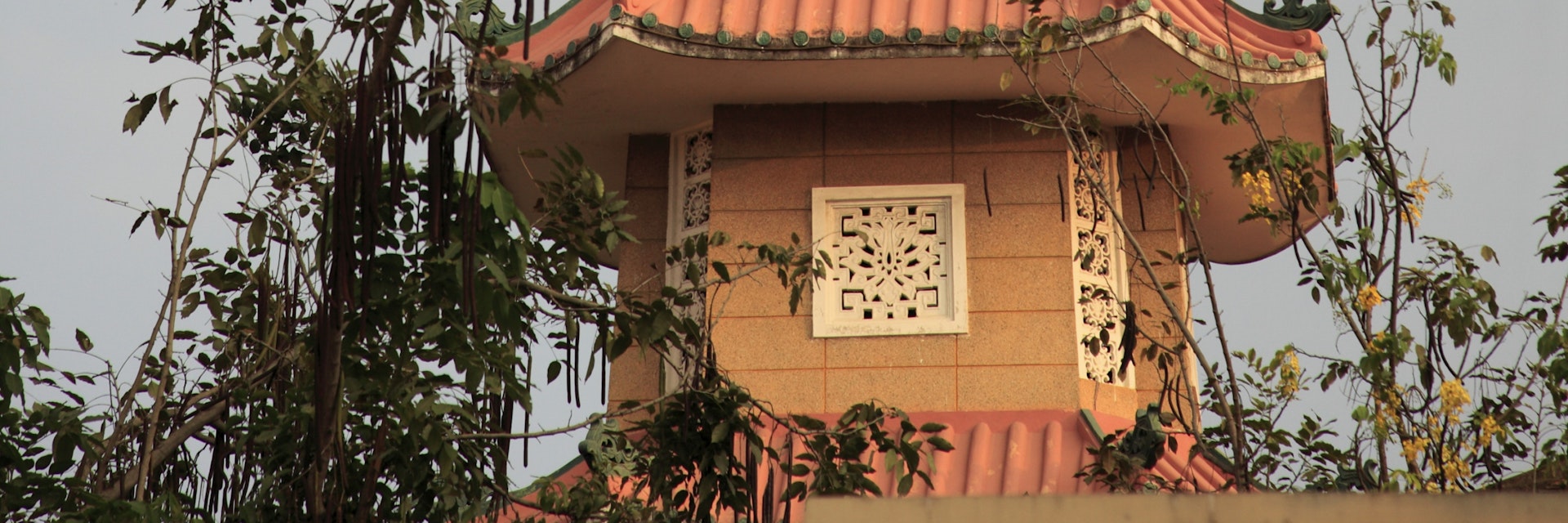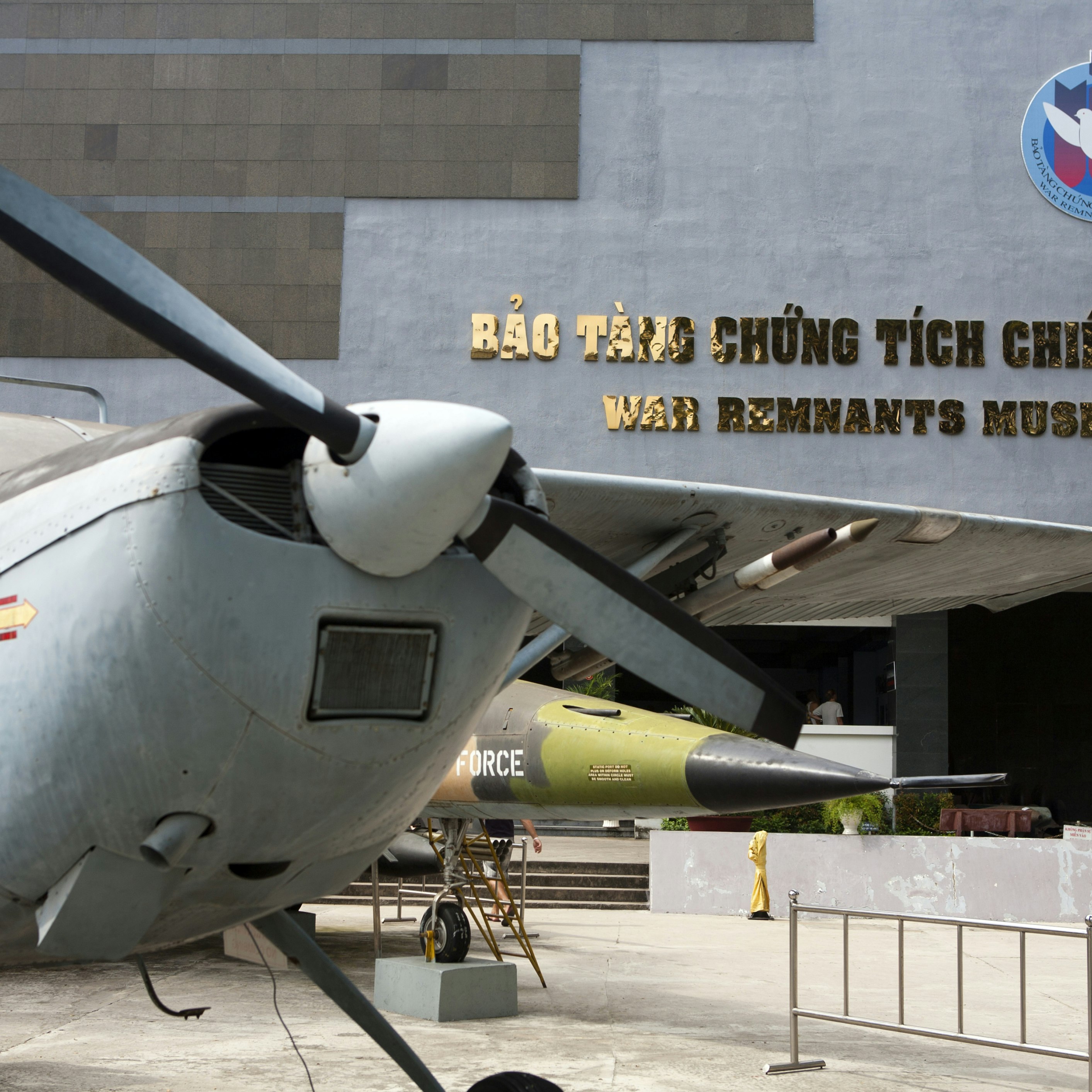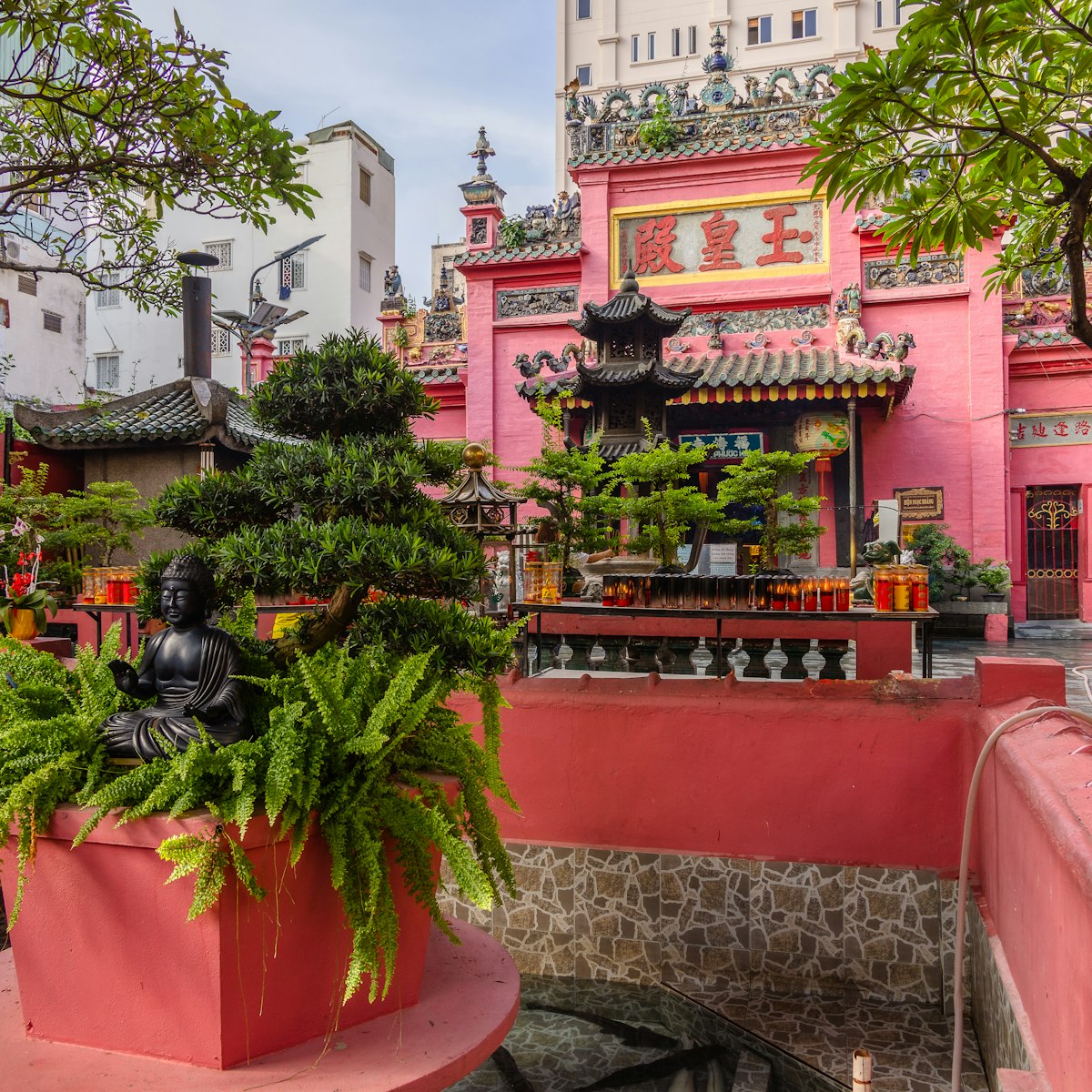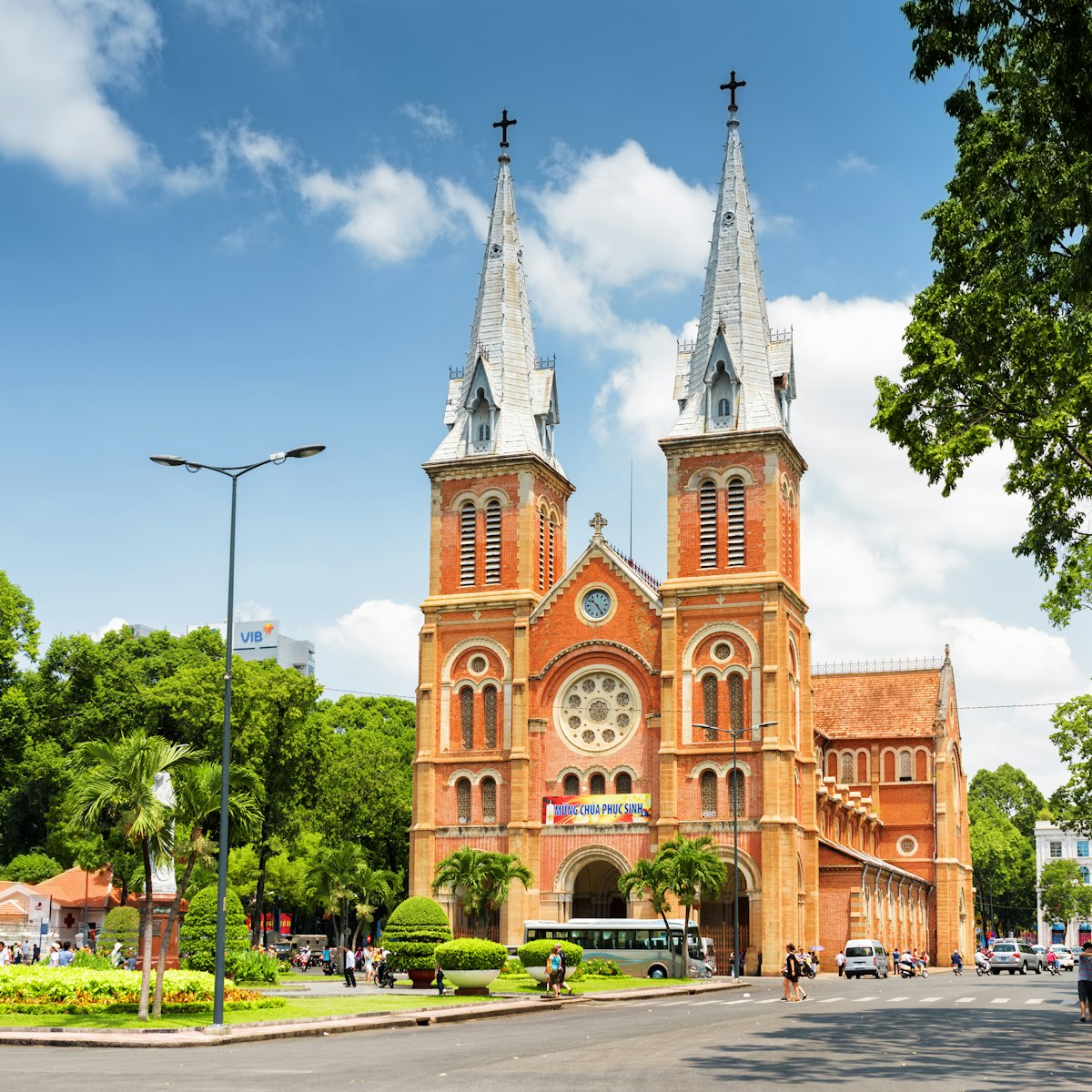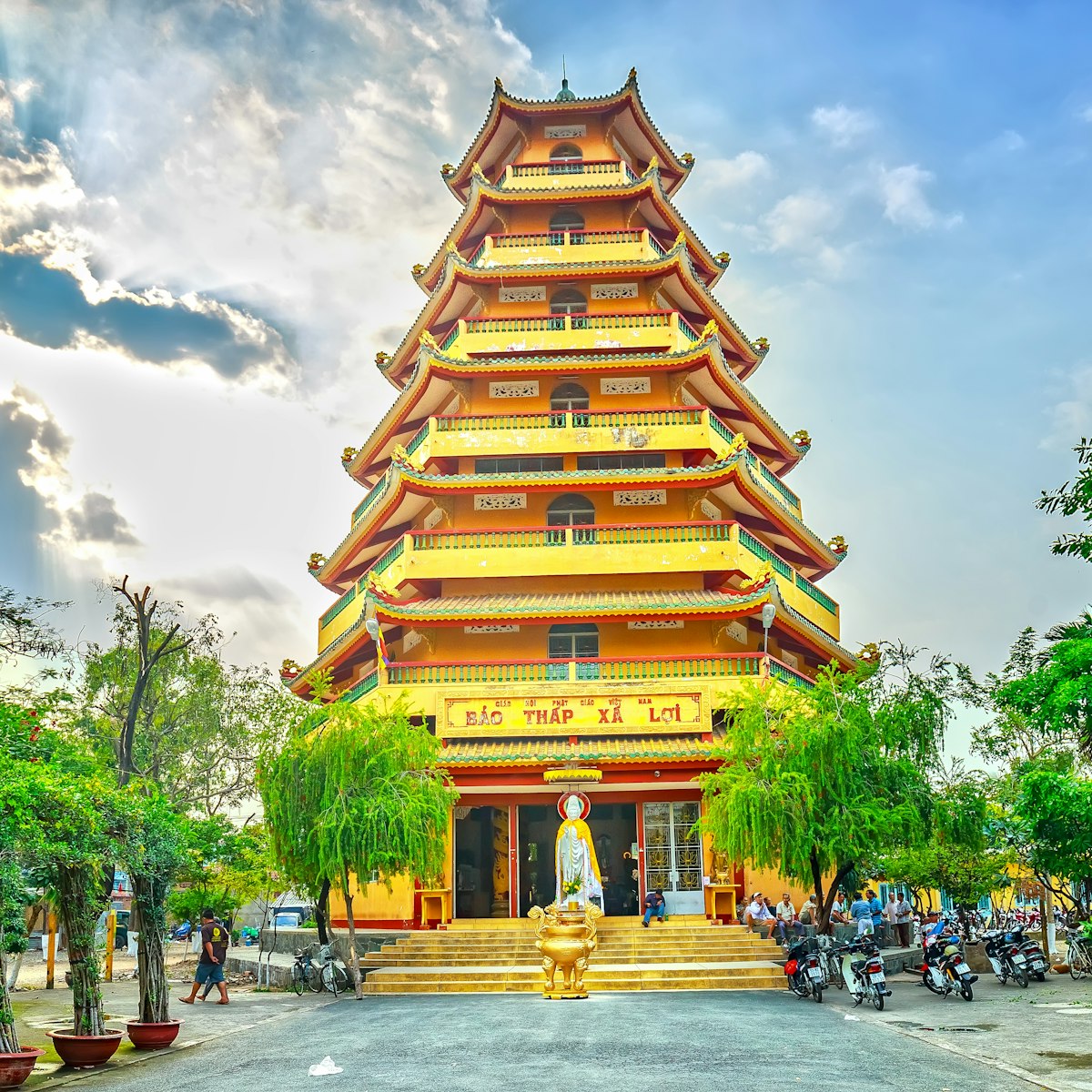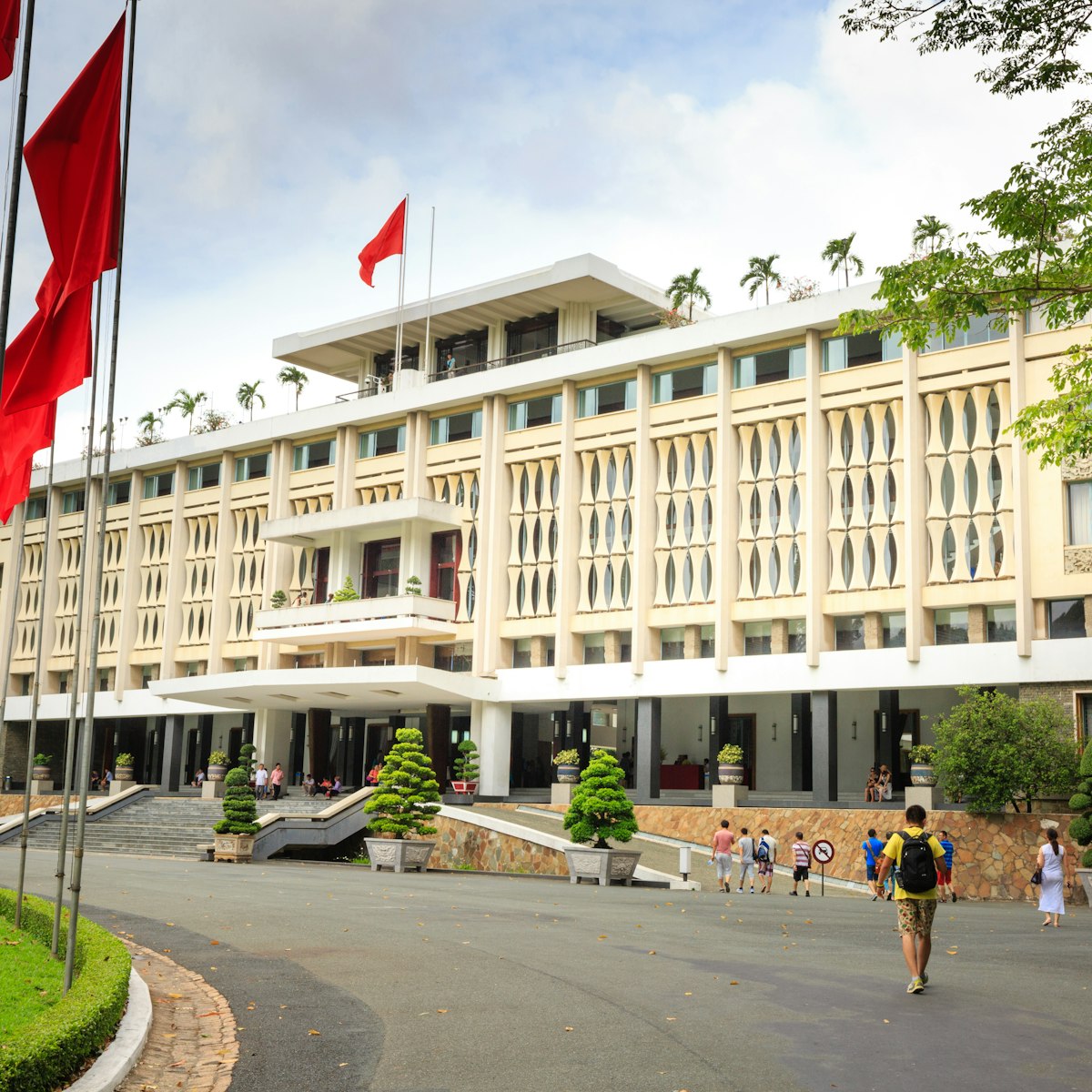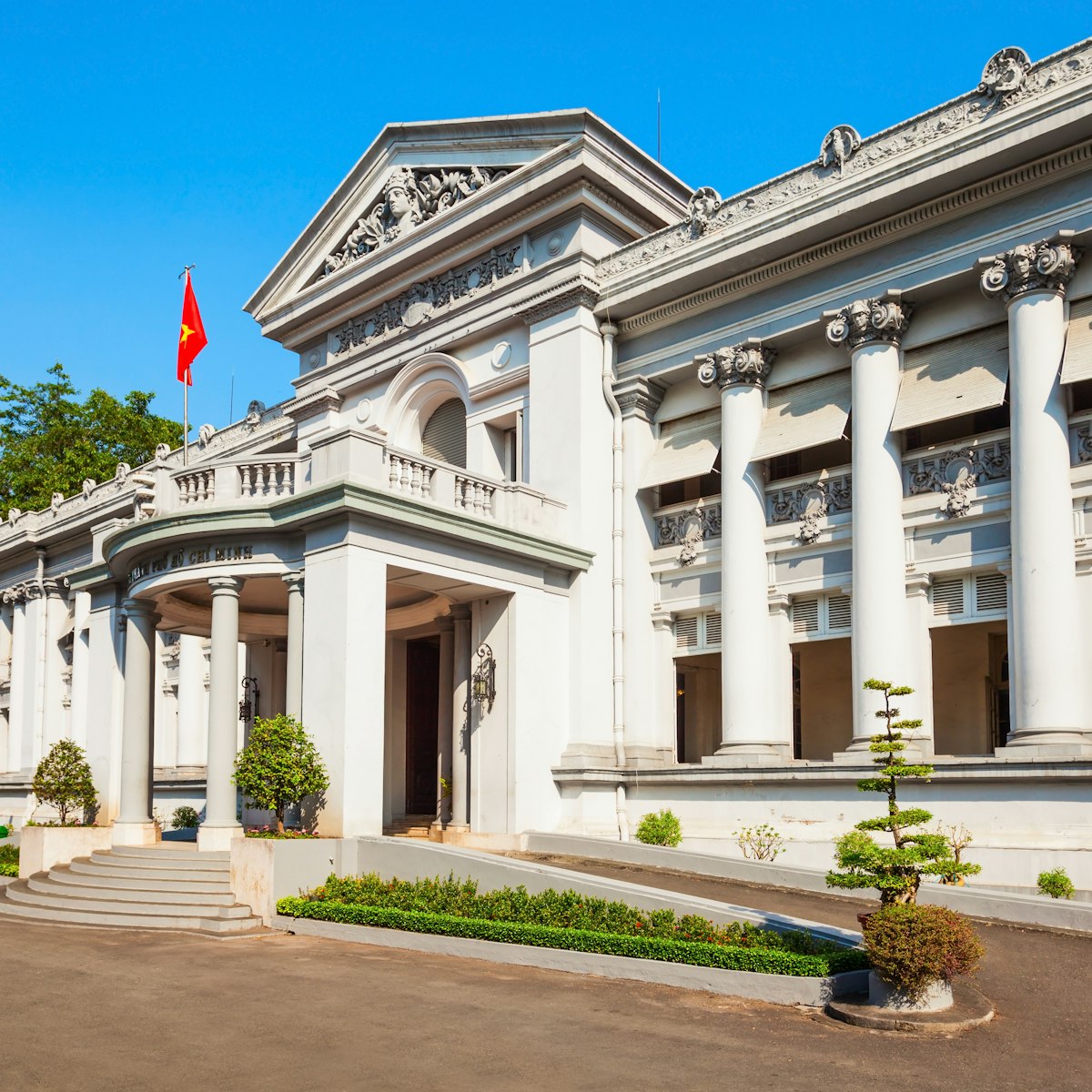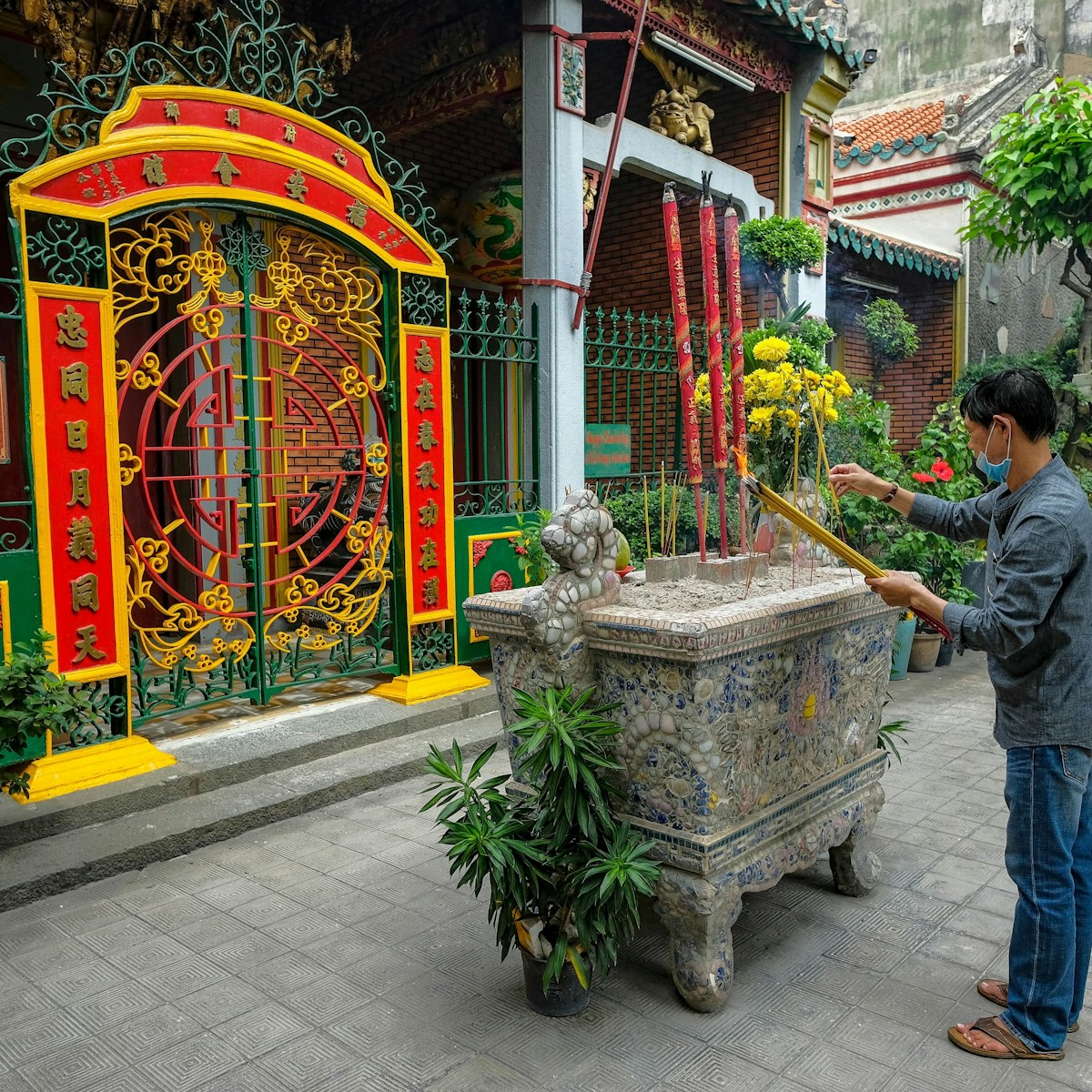The inner walls of this sanctuary, famed as the repository of a sacred relic of the Buddha, are adorned with paintings depicting the Buddha’s life. However, this 1956 building is most notable for its dramatic history. In August 1963 truckloads of armed men attacked the temple, which had become a centre of opposition to the Diem government. Today it's again a peaceful Buddhist refuge, with a large seated Buddha statue and a 32m-high seven-tier tower in its complex. Visitors must wear appropriate clothing (no shorts).
In 1963 the temple was ransacked by soldiers, a raid organised by President Diem's brother, and 400 monks and nuns, including the country’s 80-year-old Buddhist patriarch, were arrested. This raid and others elsewhere helped solidify opposition to the regime among Buddhists, a crucial factor in the US decision to support the coup against Diem. The pagoda was also the site of several self-immolations by monks protesting against the Diem regime and the American War.
The etymology of the temple name points to its significance. The Chinese characters on the front of the temple – 'Sheli Si' (舍利寺; Sheli Temple), pronounced 'xa loi chua' in Vietnamese – mean 'Sarira Temple', from the Sanskrit word for 'Buddhist relic'.
Women enter the main hall of Xa Loi Pagoda, which houses a giant golden Sakyamuni (the historical Buddha), by the staircase on the right as you come in the gate; men use the stairs on the left. Behind the main hall, a further hall contains a painting of Bodhidharma, an Indian monk celebrated as the father of Zen Buddhism. He stayed at the Shaolin Temple in China, developing the exercises that would become Shaolin Boxing. He is depicted here carrying a shoe on a stick (the story goes that when Bodhidharma's coffin was opened after his death, it was empty apart from one shoe).
Chanting and meditation classes are held here every Wednesday evening. A monk preaches every Sunday from 8am to 10am. On full- and new-moon days, special prayers are held from 7am to 9am and from 7pm to 8pm.
